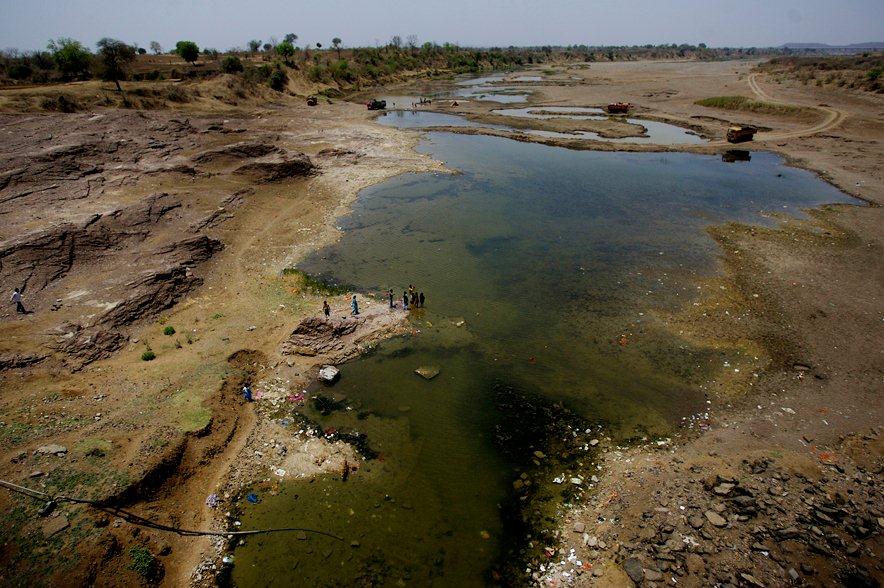 n
In the village of Mangi in central India, Laxman Tekam committed suicide
after two years of failed cotton crops and mounting debt. An estimated
200,000 farmers in India have taken their own lives since 1997,
according to government statistics. Photojournalist
Michael McElroy
met Tekam’s father while he was covering the issue in 2010. He says it
became clear that there was a link between the high suicide rate and the
country’s water crisis.
n
In the village of Mangi in central India, Laxman Tekam committed suicide
after two years of failed cotton crops and mounting debt. An estimated
200,000 farmers in India have taken their own lives since 1997,
according to government statistics. Photojournalist
Michael McElroy
met Tekam’s father while he was covering the issue in 2010. He says it
became clear that there was a link between the high suicide rate and the
country’s water crisis.
“Farmers who depend solely on
monsoon rains for their crops are seeing the annual rains become
unpredictable,” McElroy said. “Year after year, crops are failing from
lack of water and farmers are becoming more and more indebted.” India’s
water supply has been stretched thin by a soaring population, a large
agricultural sector and poor water management practices. McElroy has
been documenting the dire situation since his first trip to the country
two years ago. During his visits, he met women who walk for miles a day
in search of water. Through a translator, he heard how many of the wells
are drying up or contaminated.
He also saw people in the
overcrowded slums gather at illegally tapped water lines each morning,
filling up as many containers as they could before the supply was shut
off.
“I think when you are
subjected to a hardship for so long that it sadly ends up being another
part of your daily routine,” McElroy said. “For many, this is how it has
been for their entire life.”
The
problem isn’t unique to India. More than 780 million people worldwide
lack access to safe drinking water and 2.5 billion don’t have adequate
water for sanitation, according to
a recent report from UNICEF and the World Health
Organization.
McElroy plans to return to India in September and focus on water-related
diseases, which remain a major concern in many parts of the developing
world.
“Covering the water crisis in
India has definitely changed my outlook,” he said. “It
has changed the way I think about all of our natural resources, not just
water, and it has also changed the way I use water and what foods I eat.”
Food security is at the
center of this year’s
World Water Day, held annually on March
22. According to the event’s website, producing 1 kilogram of beef
requires 15,000 liters of water, while 1 kilogram of wheat only needs
1,500 liters.
Since becoming aware of the
issue, McElroy has cut back on the amount of meat he eats. To further
conserve water, he says he takes shorter showers and doesn't just let
the sink run.
He hopes his
photographs help convince more people to change their habits and
recognize the severity of the situation worldwide.
“I'm ashamed to admit that
before I visited India I never really paid much attention to water,”
McElroy said. “I simply turned on my faucet and it was there. I thought,
like many, that water was abundant and it would never run out.”
– Brett Roegiers, CNN
Caption information:
http://cnnphotos.blogs.cnn.com/2012/03/22/deadly-water-crisis-grips-india/?hpt=hp_c3
1. For some in Mumbai, the
only source of water is a pothole filled with water from a leaking pipe.
2. A man bathes in leftover water from a tanker
truck.
3. Water-related
diseases are a leading cause of death worldwide.
4. Dehli’s Yamuna River has been heavily polluted
with raw sewage and industrial waste.
5. Periods of drought have led to declining water
levels in India’s major rivers.
6. Calcutta is one of the most congested cities in
the country.
7. The
Mahalaxmi Dhobi Ghat open-air laundromat is spread across 10 acres.
8. Many living in the streets of India gather
discarded soda and water bottles to refill.
9. A woman in Pandharkawada shares water with other
villagers.
10. Ice is a
luxury in a country where water is hard to come by for many residents.
11. A man pouring water into containers is careful
not to spill any.
12.
Women in rural farming regions walk several miles a day for water.
13. Champeat Tekam's son is among the country's
farmers who have committed suicide.